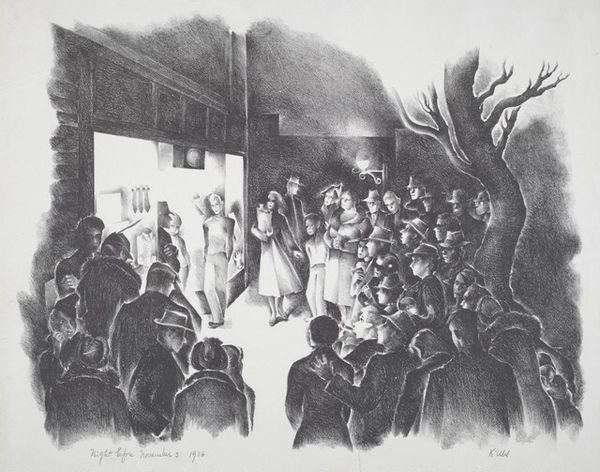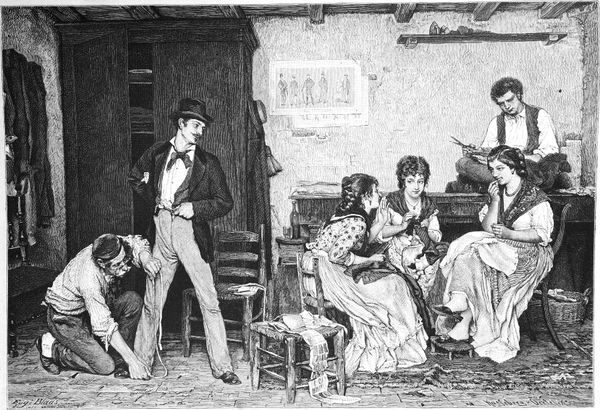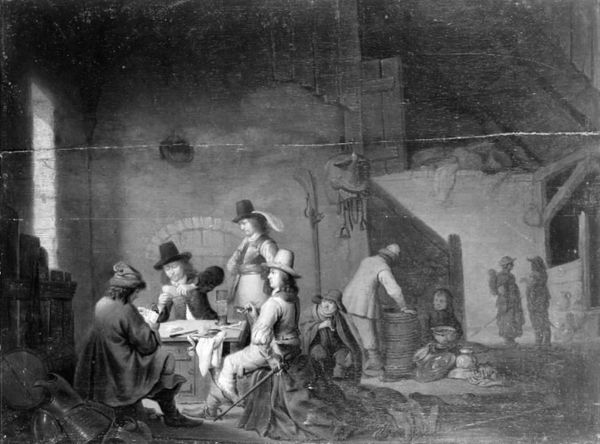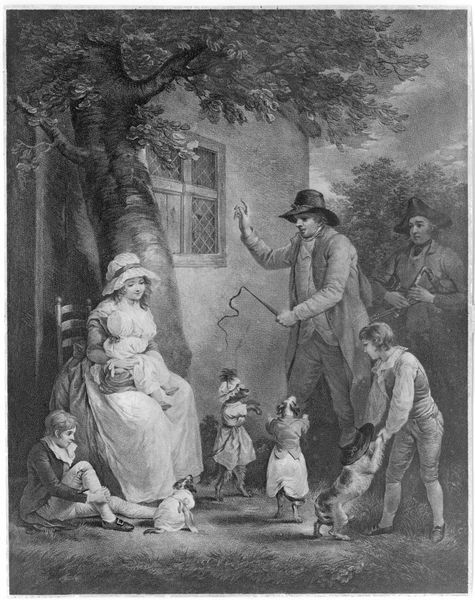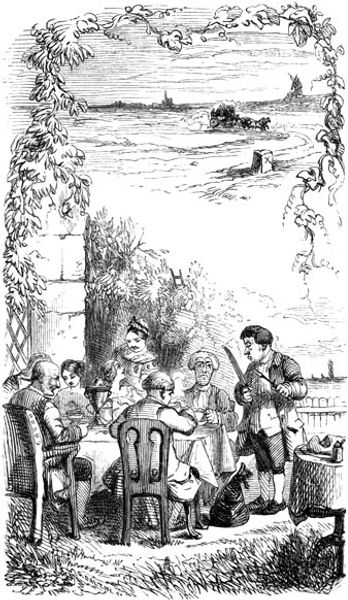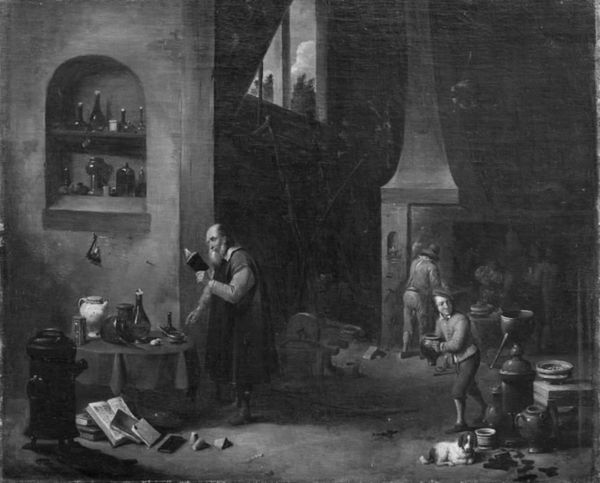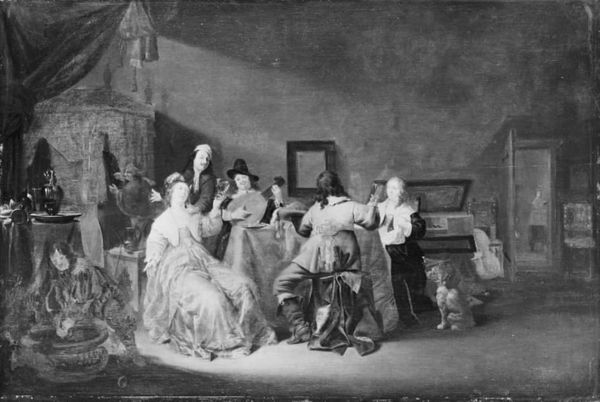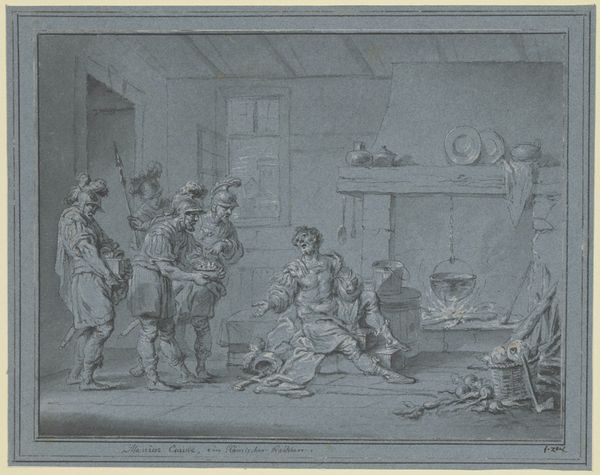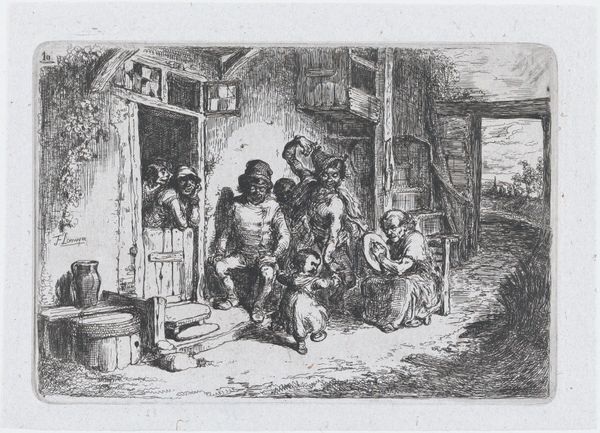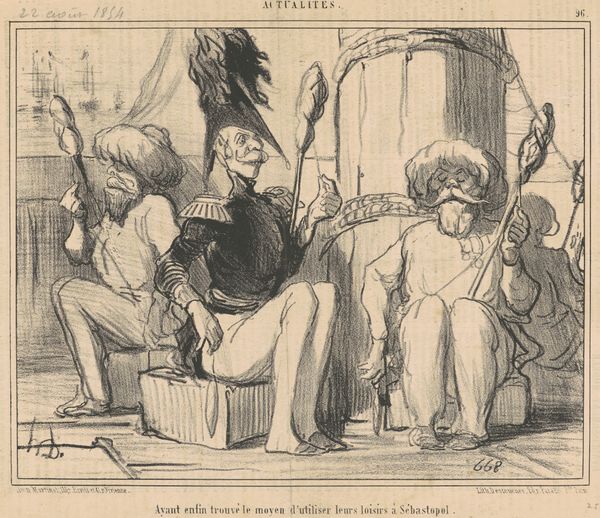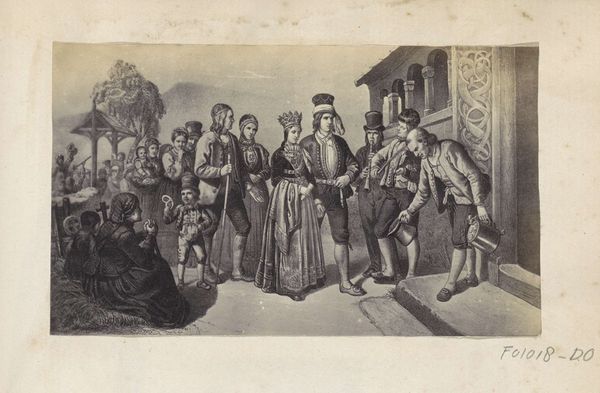
Portrait of Abbott Lawrence family in their library, No.5 Park Street, Boston
0:00
0:00
drawing, paper
#
portrait
#
drawing
#
paper
#
romanticism
#
genre-painting
#
academic-art
Copyright: Public domain
Curator: Auguste Edouart offers us a glimpse into 19th-century domesticity with his "Portrait of the Abbott Lawrence family in their library, No.5 Park Street, Boston." Editor: Immediately, the stark contrast of the silhouette style captures the eye. The play of light and shadow really defines the figures and objects within this space, creating an intriguing, almost theatrical scene. Curator: Precisely! This silhouette aesthetic, while visually arresting, also reflects the power dynamics inherent in portraiture of the time. The Lawrences, a prominent Boston family, are depicted here, but whose story does this truly represent? Editor: From a formal perspective, the composition is cleverly structured. Notice how Edouart uses the lines of the furniture and architectural elements to create depth and organize the space. The eye is led from the mother at her desk on the left to the seated patriarch, and then to the children making music on the right. Curator: That spatial arrangement emphasizes a certain Victorian ideal of domestic life, doesn't it? The separation of spheres: the women engaged in more refined, "feminine" activities, while the men occupy spaces of power, knowledge and authority as shown by the reading and contemplation, also supported by elements such as the bookcase visible in the back. Editor: I'd agree, there is a subtle contrast that evokes certain conventions. The figures are meticulously cut, giving each person a unique stance and profile. Consider how the harp creates a counterpoint to the straight lines of the room. Curator: Absolutely. Edouart subtly comments on societal expectations. The lack of individual facial features allows for broader interpretations –are these simply the Lawrences, or stand-ins for any upper-class family reinforcing prevailing societal structures? The romantic aesthetic softens what I feel are rigid expectations. Editor: The medium itself—paper—also speaks volumes. Silhouettes were an affordable alternative to painted portraits, democratizing representation even while portraying elite families. Curator: This work prompts questions about wealth, class, and visibility. In its very depiction, it illuminates aspects of cultural privilege, all through paper cutouts that seem fragile yet convey so much about social status. Editor: Indeed, the starkness pushes one to consider form and content equally. I found myself analyzing line, balance, and contrast almost immediately. Curator: And for me, the artwork allows entry to historical contexts of family and class representation. Editor: A final reflection on form meeting content; both approaches illuminate the silent narratives within the artwork.
Comments
No comments
Be the first to comment and join the conversation on the ultimate creative platform.
